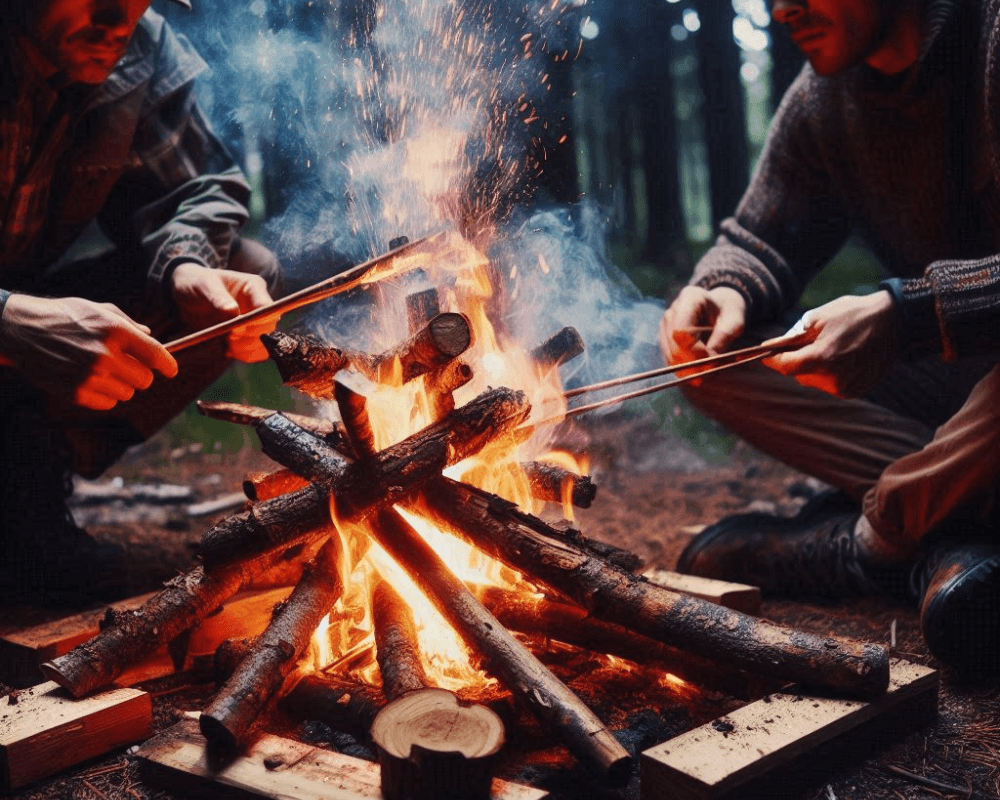
A successful campfire sets the stage for evening stories, warmth, and perhaps even a delicious meal. It all starts with knowing why you’re building a fire. For some, it’s a source of heat; for others, a means to cook food. Whatever your reason, your campfire’s success hinges on preparation.
Finding the proper location matters. I look for a spot that’s a safe distance from tents, trees, and other flammable materials and check for any local regulations to minimize my environmental footprint. Your care for the surroundings ensures safety and preserves the natural habitat.
Next, the materials you use are crucial. I always choose dry wood that burns efficiently. Tinder, like dry leaves or small twigs, and kindling made of slightly larger sticks are just as important to get the fire started. Poor material choices lead to frustration more often than not.
The arrangement of your materials can make or break your fire. Whether you prefer the teepee setup, the robust log cabin, or the simple lean-to, ensure good airflow and stability. I’ve learned that a well-structured campfire is more reliable and easier to control.
Don’t overlook the weather. Wind can be a friend or foe; know how to shield your fire or use the breeze to your advantage. And if rain is in the forecast, be ready with a plan to keep your fire (and spirits) burning.
Finally, practicing responsible fire-making is a duty of every camper. Following Leave No Trace principles by minimizing impact shows respect for nature and for fellow outdoor enthusiasts. Your fire should leave as little trace as possible, ensuring the wild stays just that – wild.
Lighting the Flame: Best Practices for Igniting and Maintaining Your Campfire
I’ll now share with you the pivotal steps to not only get your campfire blazing but also keep it going safely and efficiently. Successfully lighting a fire demands patience and precision. Utilize matches, lighters, or a ferro rod to ignite your campfire—each tool requires a different technique, so be sure to familiarize yourself with the one you choose.
Here’s a straightforward guide: Begin by lighting the tinder and then gently add kindling to the mix as the flame grows. Protect your nascent fire from wind and rain as it strengthens. If you encounter common setbacks like moisture in your wood or an unexpected gust, don’t despair. Instead, troubleshoot by shielding your fire or selecting drier wood pieces.
Once alive, guiding your fire to its full potential requires consistent attention. Regularly add larger pieces of wood to sustain the burn, and adjust the wood as needed for airflow and fuel distribution. When it comes to warmth or cooking, it’s all about control—manage the size and intensity of your flames to suit your needs.
Adhering to safety protocols for extinguishing your campfire is crucial. Quench every ember with water until the hissing stops, stir the ashes, and apply more water. Perform this ritual until the remains are cool to the touch. Remember, a responsible camper makes certain the fire is completely out before leaving the site.
Finally, honor the presence of wildlife and uphold the serenity for other campers. A robust, well-maintained campfire is a source of comfort and community in the great outdoors—keep it contained, minimize light and noise pollution, and let the natural rhythm of the wilderness prevail.
